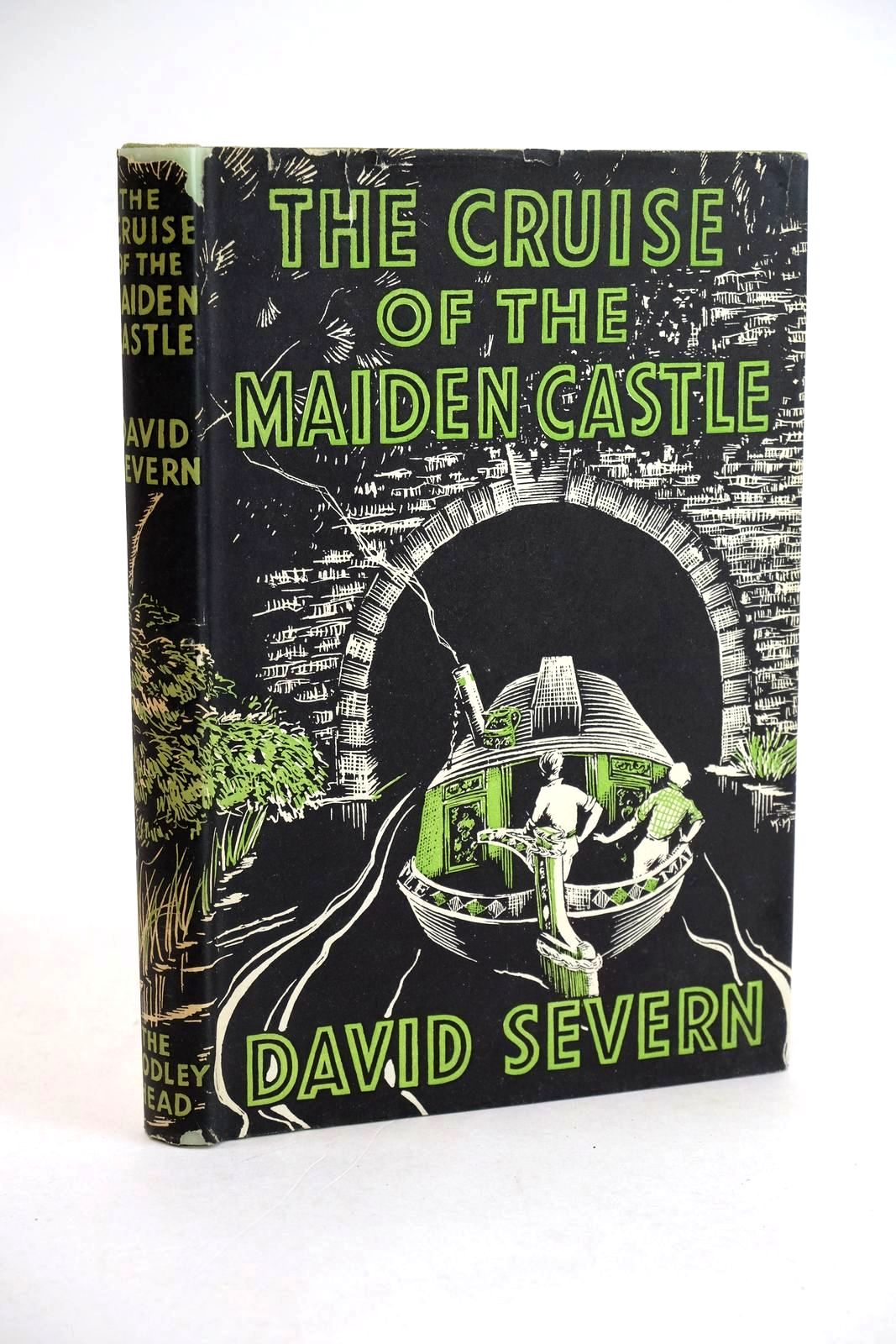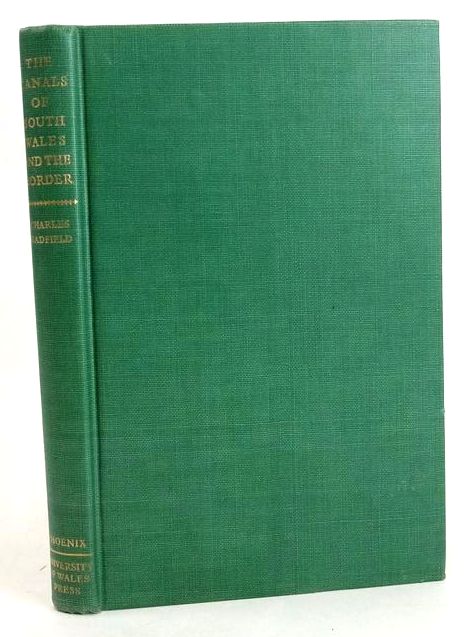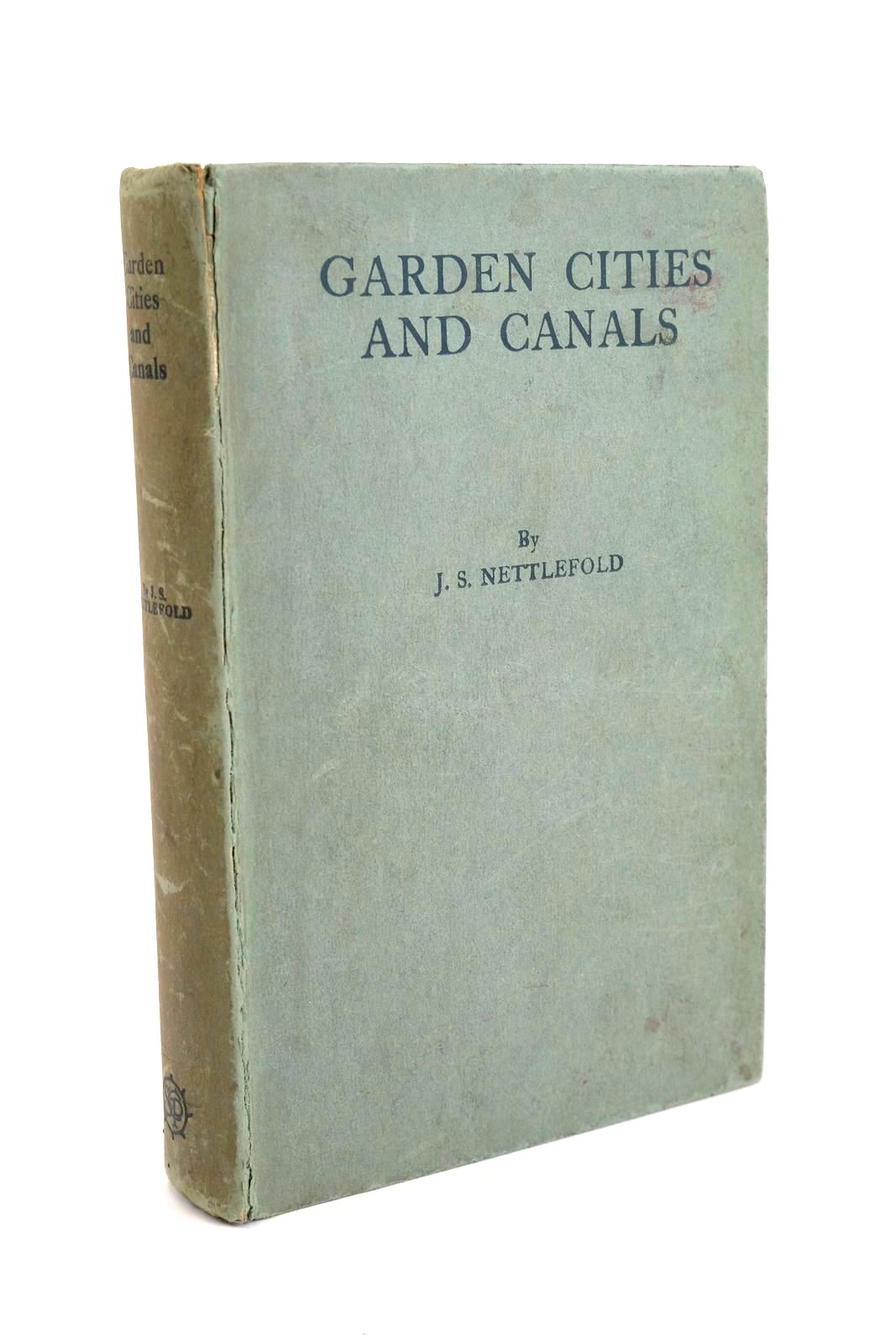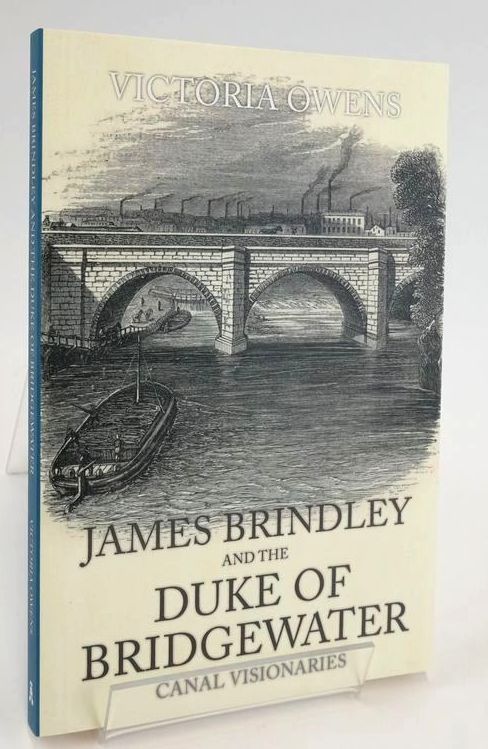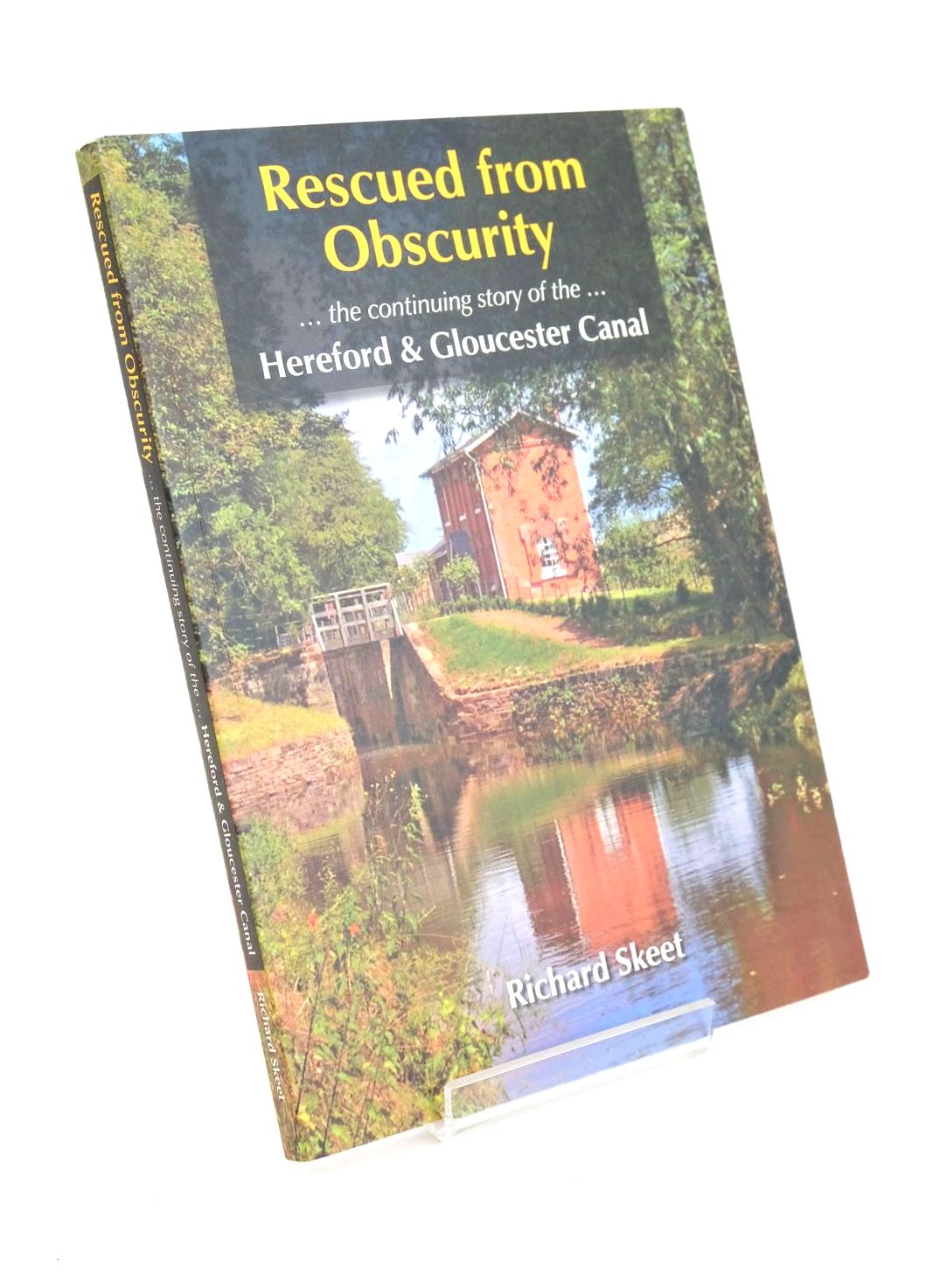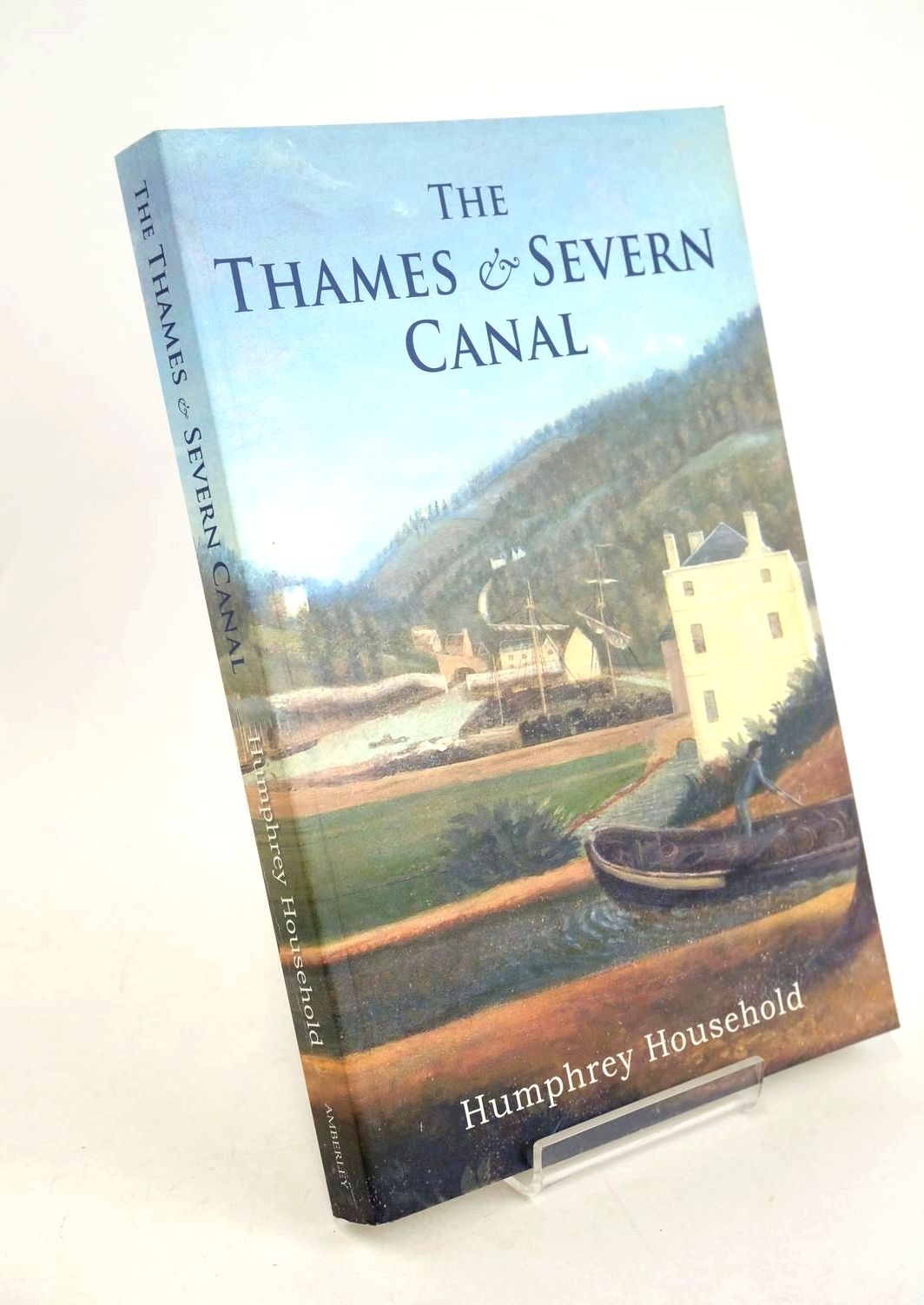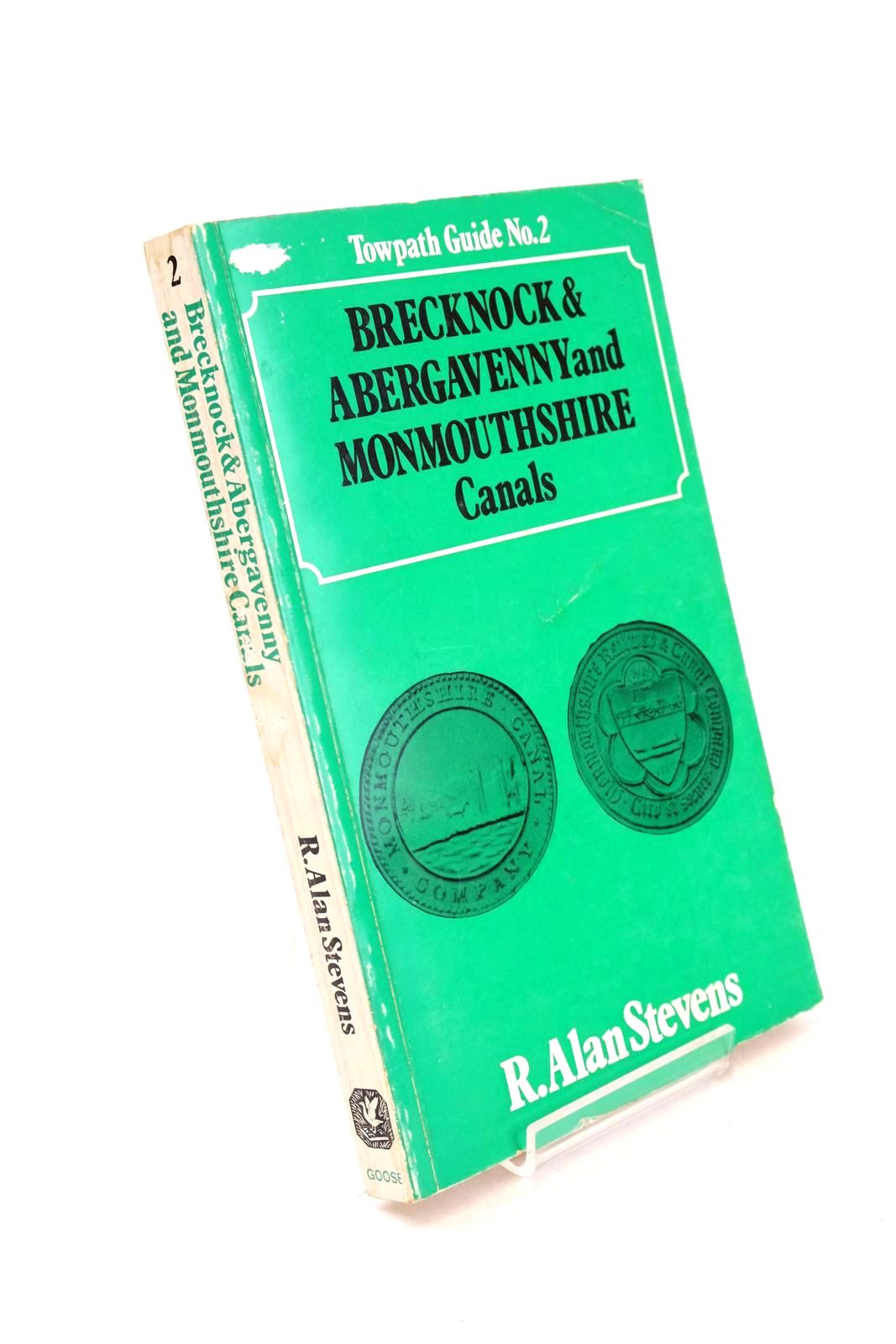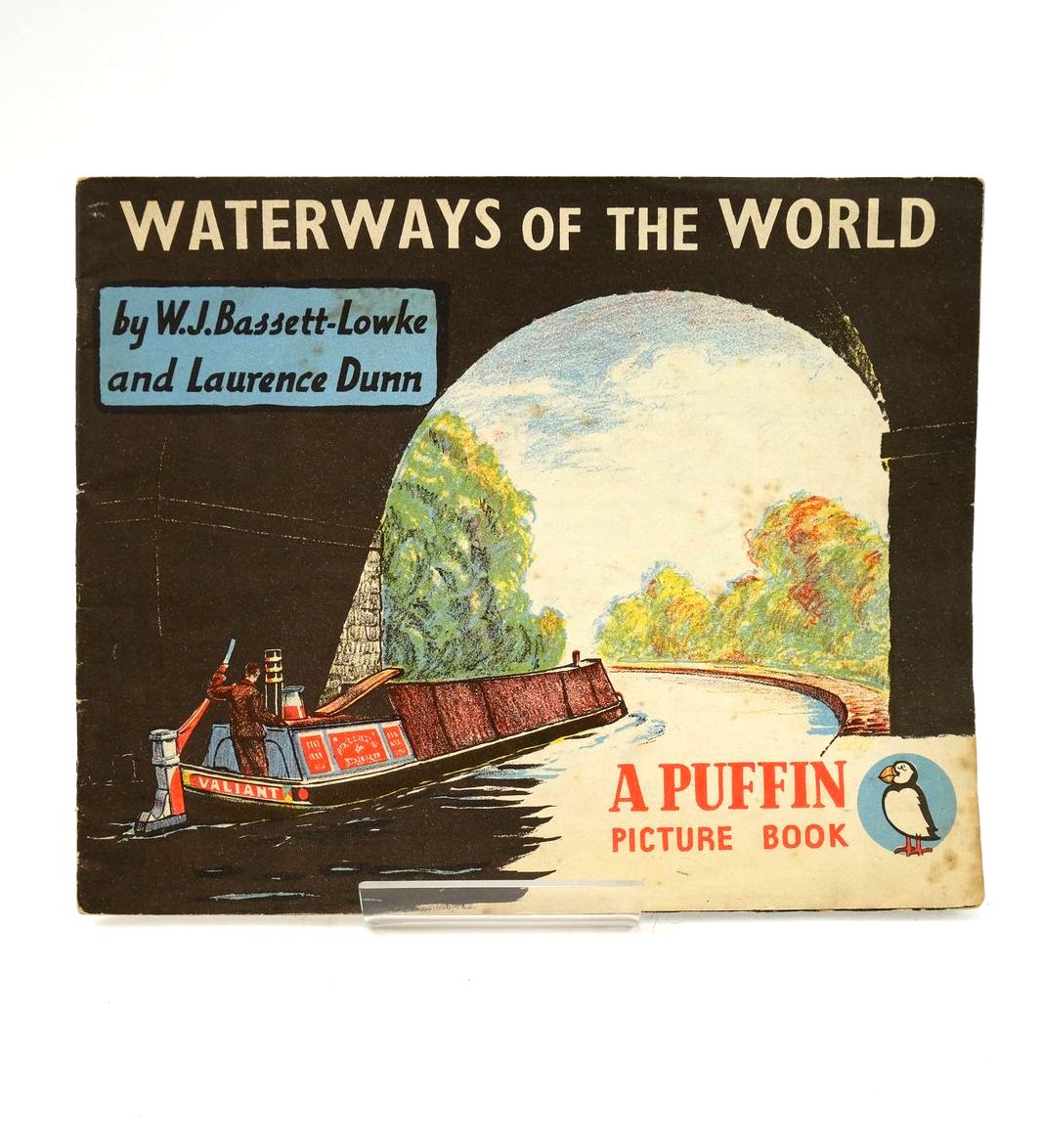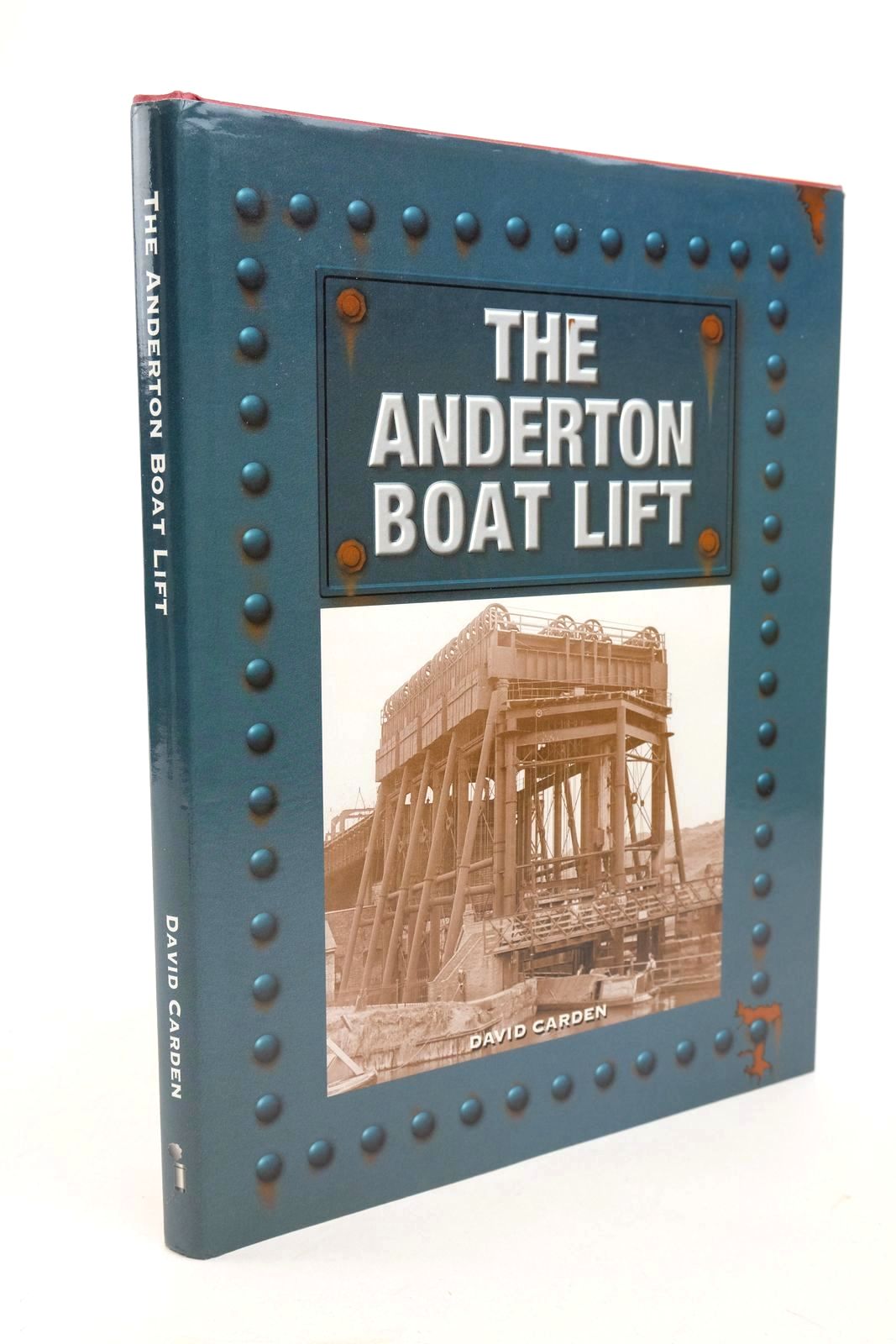Waterways of the World by W.J. Bassett-Lowke, illustrated by Laurence Dunn
 View current stock of this title
View current stock of this title
Waterways of the World is an interesting factual book in the Puffin Picture Book series. These small, colourful, softcover books are always informative, being written largely for children in a relatively simple and concise manner.
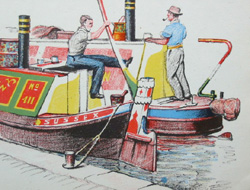 The book begins with the Great Rivers, describing the Ganges of India, the Yangtse of China, the Nile, the Thames, The Mississippi and the Rhine. Each page has a description of the rise and flow of the river along with illustrations and facts.
The book begins with the Great Rivers, describing the Ganges of India, the Yangtse of China, the Nile, the Thames, The Mississippi and the Rhine. Each page has a description of the rise and flow of the river along with illustrations and facts.
This little book has much information on artificial waterways or canals which were first used to water crops, before larger ones were constructed to carry goods. To begin with only the flatter countries used them until it could be worked out how to "lock" the water into different levels. Leonardo da Vinci, the famous painter, engineer and scientist, united the Canals of Milan by a series of locks in 1487. Venice is the city of canals, built upon a number of little islands where the waterways act as streets. In the middle ages the Venetian noblemen kept their own special gondolas sometimes carved with prows of fine workmanship.
There are also larger ship canals cut through land in order to facilitate shorter and easier routes for commerce. The Corinth canal, among other equally famous canals, is described. In olden days men used to drag ships across the narrow piece of land but in the year 67 AD the Roman Emperor Nero planned to cut a canal so that ships could pass through by water. This work was never completed but, in 1881, engineers who began the present canal found traces of these earlier workings. The canal was opened in 1893 being only 4 miles long but saving a journey from the Piraeus Sea to the Adriatic of 202 miles. The Suez Canal is 100 miles long and saves 4,461 miles between London and Bombay compared with the ship sailing around the Cape .
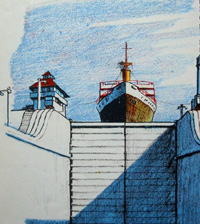
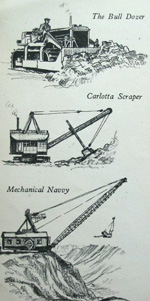
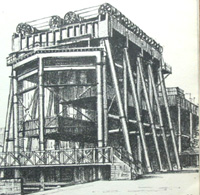
The construction of canals has moved with the development of mechanical aids, from manual labour with crude tools to the large ship canals constructed with massive machines.Waterways of the World describes some of these with their quirky names (see right). Also described is the working of the lock system which enabled canals to be built over hilly country. The old gate pattern is still used in many canals but the sluice pattern is now common where rivers adjoin the canals. There are many curious features that had to be invented in order to overcome natural obstructions. In consequence an engineer named Brindley carried the canal over the river Irwell via an aqueduct rather than a series of locks. Later on this was replaced by moveable aqueduct which is a swing bridge revolving on a central pier.
Another famous engineering feat is the Anderson lift (left) connecting the Weaver Navigation with the Trent and Mersey Canal. Erected in 1875, it was rebuilt in 1908 and is operated by caissons (water chambers).
This little book is packed with information and covers Russia, the Great Lakes of the New World and Europe, along with buildings, machines, types of craft, and the people who lived, worked, planned and constructed these waterways. It really does give a very wide introduction to this subject in all its variety, as do all the books in this fascinating series.
Contributed by Rosemary Hanley
(Published on 17th Dec 2014 )


